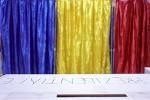The National Bank has cut its key interest rate on RON-denominated loans by a quarter of a percentage point, to a new all-time low of 6.25%, but the signal to make loans cheaper comes too late, now that the economy is down and appears not to have the strength to pick itself up.
Last year, when the effects of the crisis, which started in 2008, were fully felt, and the economy fell by 7%, the NBR was very slow to cut the interest rate, from 10.25% to 8% a year, for fear of inflationary pressures and of a RON depreciation. On neighbouring markets central banks were quick to cut interest rates, even below inflation, in order to stimulate lending, and their economies coped with the crisis better.
Only in 2010 did the Romanian central bank cut the interest rate at a faster pace, with cuts amounting to 1.75% in just four months. But now companies are struggling to cut costs after their markets collapsed, and redundancies mean people have less money to spend, which creates a downward spiral.
The National Bank has cut its key interest rate on RON-denominated loans by a quarter of a percentage point, to a new all-time low of 6.25%, but the signal to make loans cheaper comes too late, now that the economy is down and appears not to have the strength to pick itself up.
Last year, when the effects of the crisis, which started in 2008, were fully felt, and the economy fell by 7%, the NBR was very slow to cut the interest rate, from 10.25% to 8% a year, for fear of inflationary pressures and of a RON depreciation. On neighbouring markets central banks were quick to cut interest rates, even below inflation, in order to stimulate lending, and their economies coped with the crisis better.
Only in 2010 did the Romanian central bank cut the interest rate at a faster pace, with cuts amounting to 1.75% in just four months. But now companies are struggli









